‘The Wexford Thatcher’ episode from the Hands series is a tale of thatching in the South East of Ireland, taking the us right through from the harvesting of the straw to Paddy Casey the master thatcher applying his craft.
Growing, Harvesting & Threshing
We visit the farm of John Rochford on ‘a fair September morning’ to witness the cutting of the oats that would have been planted around April. His children John Joe, Raymond and Rosie lend a helping hand with the day’s work.
The Rochford’s use a 6ft Albion power driven reaper and binder to harvest the straw. The reaper and binder cuts the corn which then falls on a platform canvas, two other canvases then take the corn off the platform and transport it up to a tying mechanism. When enough corn has been gathered to create a sheaf, a tripping mechanism throws it out tied and knotted with binder twine.
Although this machinery appears unproductive by today’s standards – it all comes down to quality over quantity. Straw harvested by this method is superior for thatching as it cuts the straw lower down and doesn’t cause it to split or become brittle like the modern combine harvester does. Livestock also prefer the corn dried in the sheaf to the artificially dried corn of the harvester. This method has almost completely died out in this country and reaper and binders are now only seen in vintage machinery shows and exhibitions.
The next stage is to gather the sheaves into stooks – stacking them together upright in bunches of 3-4 so they will dry. When I was younger the straw was cut and left loose on the field. The farm workers then came along with a pike and gathered them into great big mounds of straw to dry – like giant yellow jellies. Years later after the harvester appeared and I was somewhat older, I can remember bringing the neat harvested rectangles of straw together to stand them upright in the same method as the stook so they would dry.
After the oats have dried they may be brought into the shed for storage until threshing day. The Rochford’s are the proud owners of a Farmer’s Friend – a Marshall 6 horse powered single traction engine which was used to power the threshing machine. The Marshall was built in 1889 in England and burns most fuels to produce steam to drive the piston which is connected to the threshing machine by a rubber belt.
It takes 15 men to fill all the jobs at the threshing so it is easy to see why farming in those days were such a community affair. Each farmer in a clachan or community helped each other. Even as recent as my youth – all relations and neighbours used to help with harvesting the straw – an event as big and exciting as a day in the bog – yet closer to home for carrying the tea!
The threshing machine seperates out the oats, straw and chaff. After a long day, tea and food is served by the Bean an Ti for all the workers.
Harvesting the scallops
Next we visit Johnny McGrath from Mulrankin who cuts the sprays (which are also known as scallops or spidogue’s) which will be used to secure the thatch onto the roof of the dwelling. He believes that black sally is best, better than hazel but harder to get due to the destruction of hedgerows by mechanical hedge trimmers.
He prepares the sprays by sharpening both ends with a knife, then beating the centre to soften the wood so it will be pliable enough to bend into a U shape. These sprays are then gathered into bundles of 100 for sale to the thatchers.
The Thatcher – Paddy Casey
Paddy Casey is the master thatcher of the area and one of the few remaining when this series was shot. However it was not always so – Paddy had to travel to England to find work in his youth as thatchers were as ‘plentiful as sloe’s in November’.
Paddy prepares the roof by clearing away the rotten straw and broken sprays to get down to a clean base before using his home made beating pin to drive handfuls of straw in to the roof. He works in strakes – about the distance of a foot between the ladder and the last strake – four strakes a day is considered good going.
The straw needs to be wetted for a week before use as dry straw could come loose on the roof. Moss often forms on the part of the roof that receives the least sunlight as the straw does not dry quickly enough. The average house (we are talking about 1970’s houses here not the sprawling mansions of yonder celtic tiger) needs 400 bundles of straw to thatch it.
The narrator makes the poignant point that the beautiful aesthetic of the thatch is now dying out, soon to be replaced by ‘hideous modern bungalows’ – surely a prophetic remark in its time as the country has indeed been littered with these non-descript dwellings.
This documentary highlights the craft, community and traditions that were involved – from start to finish – in the thatching of a cottage. There is no doubting that thatching is an expensive and difficult business these days however there are very few sights as beautiful as a traditional Irish thatched and whitewashed cottage. The neat, golden thatch shines amongst the dreariness of the slate and tile.
This documentary catalogues the charm and beauty of this dying craft as it was nearing the end of its heyday and it is a pure pleasure to watch the skills in action in the hands of the craftsmen themselves. The commentary and scripting by Diarmuid O’Murirthe is akin to being told the tale first hand by a great storyteller.
This disk or the entire series are available to buy directly from the series creator, for more information see the contact details below:
Contacts:
Sally Shaw-Smith
Ballyglass,
Claremorris,
Co. Mayo,
Ireland
Phone: +353 [0]94 93 60370
Web: www.irelandstraditionalcrafts.com
Email: sallyshawsmith@eircom.net
You can also buy the series from Etsy.com by clicking here
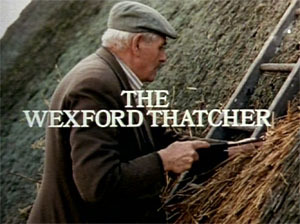
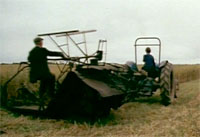

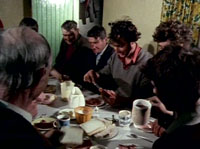
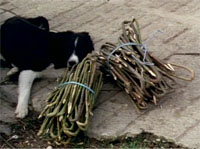
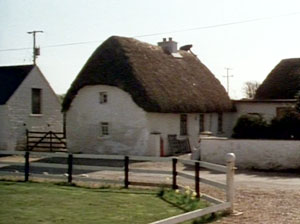
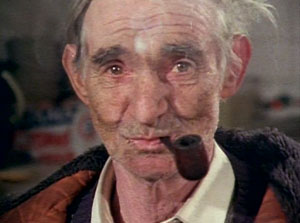
Great article, I will save this post in my Del.icio.us account. Have a great evening.
Wonderful. I was not expecting such a great post. I just stumbled across your web page on Live.com. I figured I should tell you that you have a useful article on this site. I have appreciated looking over your site. I’ll be subscribing to your site in OnlineNavigator. I can’t wait to see your next article!
Litigation Lawyer Minneapolis
It’s really a great and useful piece of info. I’m happy that you just shared this useful information with us. Please keep us up to date like this. Thanks for sharing.
Cool info it is surely. My mother has been seeking for this info.
Great episode and epic series – ‘Irish Hands’